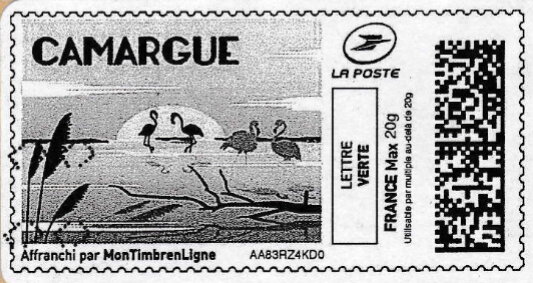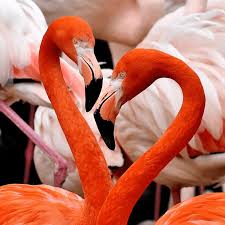Stamp: Camargue in black (France 2019)
Camargue in black (France 2019)
01 January (France ) within release MonTimbrEnLigne. Towns and Regions goes into circulation Stamp Camargue in black face value Lettre No Face Value
| Stamp Camargue in black in catalogues | |
|---|---|
| Colnect codes: | Col: FR-TIM 2019-88b |
Stamp is square format.
Also in the issue MonTimbrEnLigne. Towns and Regions:
- Stamp - France: Eiffel tower on a Starry Night face value Lettre;
- Stamp - Grand Est Mountain Village face value 0.70;
- Stamp - Rennes in black face value Lettre;
- Stamp - Ile de la Reunion face value Lettre;
- Stamp - Paris. Arc De Triomphe face value Lettr;
- Stamp - Saint Malo face value Prioritaire;
- Stamp - Mont Saint Michel 3 in black face value Lettre;
- Stamp - Saint Malo face value Lettr;
- Stamp - Strasbourg in black face value Lettre;
- Stamp - Rouen face value Lettre;
- Stamp - Avignon in black face value Ecopli;
- Stamp - Bayonne in black face value Lettre;
- Stamp - Camargue in black face value Lettre;
- Stamp - Ile de France in black face value Lettre;
- Stamp - Le Havre face value Lettre;
- Stamp - Lille in black face value Lettre;
- Stamp - Montpellier in black face value Lettre;
- Stamp - Nice in black face value Lettre;
- Stamp - Saint Tropez in black face value Lettre;
- Stamp - Toulouse 3 in black face value Lettre;
- Stamp - Chenonceau in black face value Ecopli;
- Stamp - Chenonceau in black face value International20;
- Stamp - Montbeliand in black face value Lettre;
- Stamp - Montmartre in grey face value International20;
- Stamp - Paris. Arc De Triomphe in black face value International20;
- Stamp - Reims in black face value Lettre;
- Stamp - Guadeloupe in black face value Ecopli;
- Stamp - Grand Est Mountain Village face value Lettre;
- Stamp - Guadeloupe face value Lettre;
- Stamp - Rennes face value Lettre;
- Stamp - Saint Malo face value Ecopli;
- Stamp - Auvergne - Rhône-Alpes face value Lettre;
- Stamp - Mont Saint Michel 3 face value Lettre;
- Stamp - Saint Tropez face value Lettresuivie100;
- Stamp - Strasbourg face value Lettre;
- Stamp - Toulouse 3 face value Lettre;
|
Data entry completed
46%
|
|
|---|---|
| Stamp Camargue in black in digits | |
| Country: | France |
| Date: | 2019-01-01 |
| Emission: | Personalized - Official |
| Format: | Stamp |
| Face Value: | Lettre No Face Value |
Stamp Camargue in black it reflects the thematic directions:
Animals are multicellular, eukaryotic organisms of the kingdom Animalia (also called Metazoa). All animals are motile, meaning they can move spontaneously and independently, at some point in their lives. Their body plan eventually becomes fixed as they develop, although some undergo a process of metamorphosis later on in their lives. All animals are heterotrophs: they must ingest other organisms or their products for sustenance.
Birds (Aves), a subgroup of Reptiles, are the last living examples of Dinosaurs. They are a group of endothermic vertebrates, characterised by feathers, toothless beaked jaws, the laying of hard-shelled eggs, a high metabolic rate, a four-chambered heart, and a strong yet lightweight skeleton. Birds live worldwide and range in size from the 5 cm (2 in) bee hummingbird to the 2.75 m (9 ft) ostrich. They rank as the class of tetrapods with the most living species, at approximately ten thousand, with more than half of these being passerines, sometimes known as perching birds. Birds are the closest living relatives of crocodilians.
Coastal areas are local administrative units (LAUs) that are bordering or close to a coastline. A coastline is defined as the line where land and water surfaces meet (border each other).
Flamingos or flamingoes (/fləˈmɪŋɡoʊz/) are a type of wading bird in the family Phoenicopteridae, which is the only extant family in the order Phoenicopteriformes. There are four flamingo species distributed throughout the Americas (including the Caribbean), and two species native to Afro-Eurasia.




